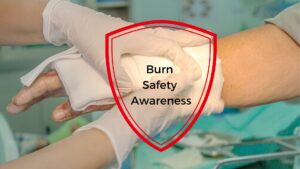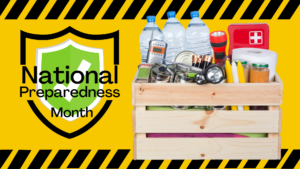*** Health and Safety Alert Bulletin ***

Although magnets can be wonderful toys and highly educational, these are really adult’ toys, and not for children. Small children should not be allowed to handle any of our magnets at all! Older children should handle them only under adult supervision, and wear proper safety equipment (depending on the size and power of the magnets being used). Small magnets pose a very little hazard, but large magnets should be handled with extreme caution.
Pacemakers and Defibrillators
Pacemakers and defibrillators can be sensitive to strong magnetic fields. If you or someone in your household has a pacemaker or defibrillator or has health issues that require that you wear electronics of any sort, avoid magnets completely until you consult your doctor!
Pinch and Eye Hazard
Strong magnets can pose a serious pinch hazard due to their attractive force on each other and on any metal object containing iron. Usually, the surprise is an issue–they can jump out of your hands and snap together from a surprising distance before you realize what is happening. Though small magnets are quite safe, larger sizes are strong enough that they can pinch you like a pair of pliers, and be very difficult to remove from your fingers without help. They are strong enough that they can fly into each other or to a piece of iron or steel with such velocity that they can break and send sharp ‘shrapnel’ flying about! Plus, your expensive magnets are then permanently broken.
ALWAYS use a strong grip and zen-like concentration when handling large magnets, and wear safety goggles. Some people wear gloves when handling them, this is your option. The glove may help prevent accidental blood blisters if the magnets snap together, but they may also compromise your firm grip. Large magnets with sharp corners pinch and shatter the worst, rounded ones are safer. Small magnets are generally very safe.
Damage to magnetic storage media
Magnetic fields can cause damage to magnetic storage media. These include cassette tapes, floppy disks, credit cards, video tapes, and computer hard drives. Keep all magnets at least 24 inches away from all types of magnetic media.
Damage to Electronics
Certain electronic devices are sensitive to magnetic fields and may be damaged permanently or temporarily disabled if exposed to a magnetic field that is too strong. Any video screen or television will become distorted and/or discolored if exposed to a strong magnetic field. While damaged screens can usually be demagnetized, it’s often tricky and may require qualified service technicians to do so. Other electronic devices like cell phones and pagers can also be damaged. Store your magnets in a safe place away from electronics of any kind.
Pregnant Women
Although there are no known health risks involving the handling of permanent magnets of the sizes we sell, just to be on the safe side we would advise pregnant women to avoid any exposure to strong magnetic fields.
Drilling and Machining
Neodymium magnets are by nature very hard and brittle. Although they can be cut, drilled, and machined, it should ONLY be done by folks who are experienced with ceramics. If the magnets get over about 300 deg F, they will lose their magnetism permanently. They are flammable, and it is not difficult while grinding or machining to get them (or the chips and specks of dust from cutting) so hot they ignite. If they do ignite, the fumes are toxic and the material burns very fast and hot, like Magnesium! In our experience, any machining of these magnets should be done with diamond tools under lots of coolant with good ventilation and the risk of fire in mind.

CPSC has received reports of toddlers finding loose magnets left within reach and placing them in their mouths. It can be extremely difficult for a parent to tell if any of the tiny magnets are missing from a set. In some of the reported incidents, toddlers have accessed loose magnets left on a refrigerator and other parts of the home.
The use of the product by tweens and teenagers to mimic piercings of the tongue, lip, or cheek has resulted in incidents where the product is unintentionally inhaled and swallowed. These ingestion incidents occur when children receive it as a gift or gain access to the product in their homes or from friends.
When two or more magnets are swallowed, they can attract one another through the stomach and intestinal walls, resulting in serious injuries, such as holes in the stomach and intestines, intestinal blockage, blood poisoning, and possibly death. Medical professionals may not diagnose the need for immediate medical intervention in such cases, resulting in the worsening of the injuries.
The CPSC is once again urging people to keep strong magnets away from kids, including that they:
- Keep small magnets away from young children who might swallow them.
- Look out for loose magnet pieces – and regularly inspect toys and children’s play areas for missing or dislodged magnets.
- If you suspect that magnets have been swallowed, seek medical attention immediately, and look for abdominal symptoms, such as abdominal pains, nausea, vomiting, and diarrhea.
- Note that in x-rays multiple magnetic pieces may appear as a single object.

The CPSC is once again urging people to keep strong magnets away from kids, including that they:
- Keep small magnets away from young children who might swallow them.
- Look out for loose magnet pieces – and regularly inspect toys and children’s play areas for missing or dislodged magnets.
- If you suspect that magnets have been swallowed, seek medical attention immediately, and look for abdominal symptoms, such as abdominal pains, nausea, vomiting, and diarrhea.

Parents should also be aware that some tweens and teens are using magnets to mimic body piercings, which can put them at risk of ingesting the magnet.
Small size, serious risk
Many children’s toys contain magnets, and often those magnets are quite small. If they come loose or if there is a small toy with a magnet inside, the magnet or toy can be dangerous if swallowed, especially when the magnets are powerful ones. Some of the toys containing magnets include:
- Construction sets
- Puzzles
- Toy jewelry and dress-up toys
- Alphabet and number magnets
- Action figures and dolls
- Science and craft kits
- Board games
- Vehicle sets
- Refrigerator stick-on

Swallowing magnets
If a child swallows more than one powerful magnet — or small items with an attached magnet — in a short period of time, the magnets can attract one another while moving through the intestines. This can cause the intestines to twist, creating blockages or tearing the intestinal walls — with serious and sometimes even fatal consequences. Because the initial symptoms are similar to the flu (vomiting, diarrhea, and stomach pain) they can be difficult to identify as being caused by magnets, and sometimes parents don’t end up seeking medical attention until it’s too late.
What to do if a child eats magnets
If parents suspect a child has inhaled or swallowed a magnet, parents should seek medical attention immediately. Symptoms of magnet ingestion (often described as “flu-like”) include:
- Nausea
- Vomiting
- Diarrhea
- Cramping
- Abdominal Pain
If your child does have the magnets still in their mouth they may be slick with saliva and not able to grab with fingers. You can get a couple spoons to use the handle parts and have the handles be the attraction for the magnets to remove them.
In summary, keep an eye on your child’s toys, beware of the dangers associated with magnets and seek medical attention immediately if you think someone has swallowed a magnet. Don’t assume it will pass normally. It could cost them their life.
Safety First, Safety Always
Safety Alerts are a publication of information from various sources to share with the community. The information contained in this newsletter has been obtained from sources believed to be reliable, and the editors have exercised reasonable care to assure its accuracy. However, Ken does not guarantee that the contents of this publication are correct. We welcome topics of interest from our readers. Material may be rewritten to conform to newsletter space. The material should be addressed to Ken Oswald, Safety Manager, 583 US 70, Clovis NM 88101.
Ken O.



